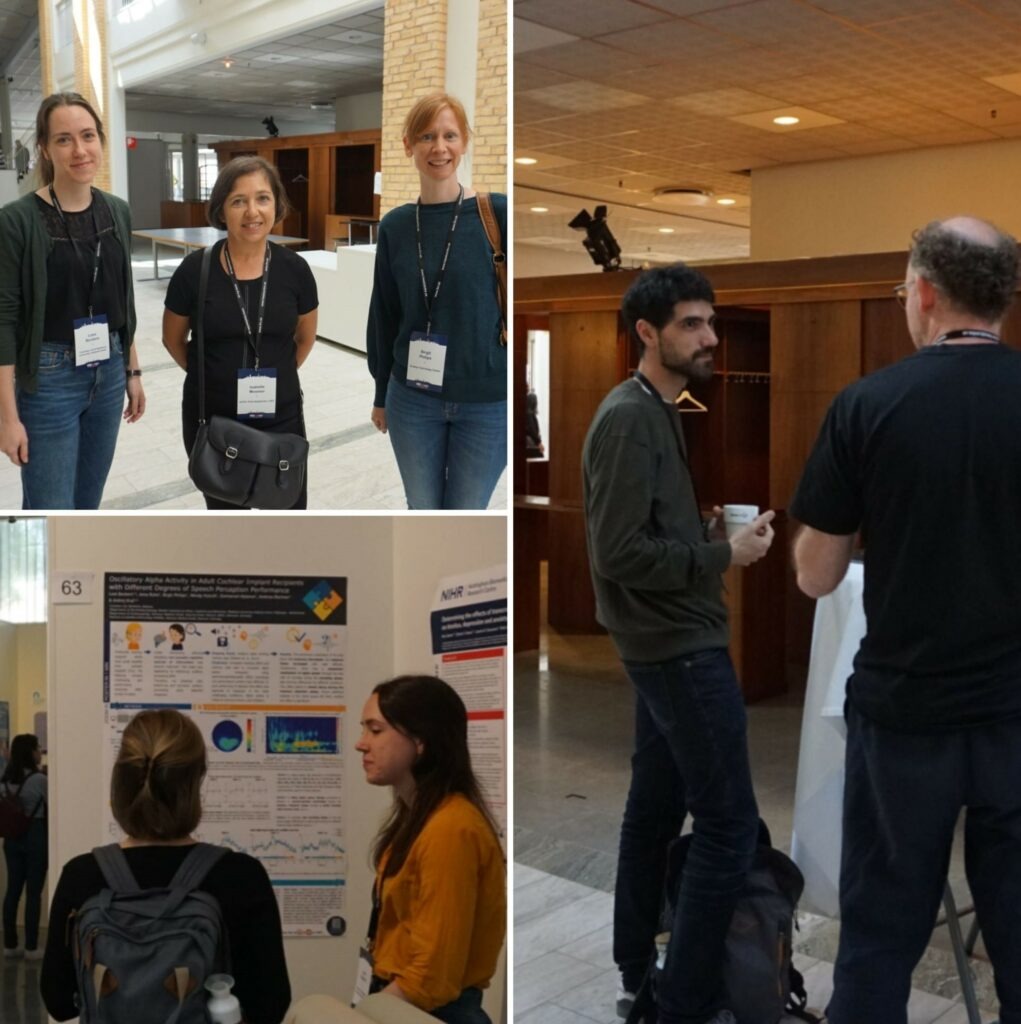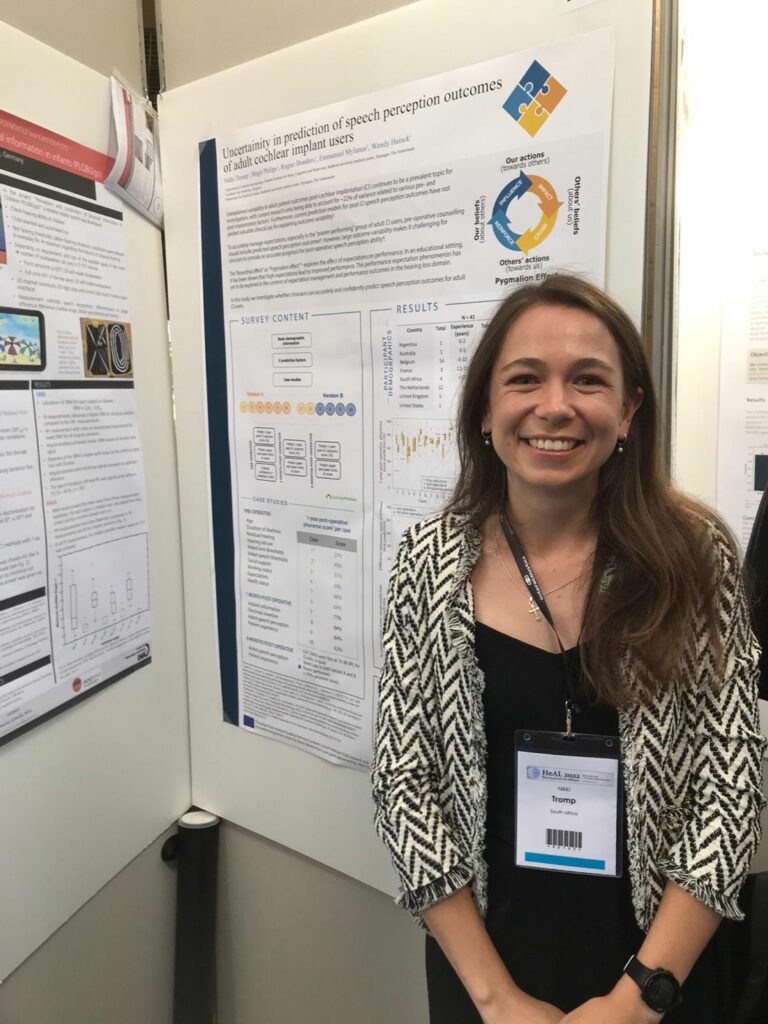With all the travelling and meeting restrictions behind us, the ESRs have finally been able to attend their first conference in person over the past month. On their own, or together with fellow members of the MOSAICS team, they have visited conferences in the UK, Sweden, and Italy. Read in this news piece what that experience was like.
The first one to bite the bullet was Enrico Migliorini (ESR4), who attended the British Cochlear Implant Group Meeting (BCIG) in Cardiff on the 26th and 27th of April. Set in the prestigious venue of the Cardiff City Hall, the BCIG conference provided a venue for researchers to present their findings both to large manufacturer companies in the field of Cochlear Implants and to those who are most touched by development in that field, whether they be clinicians or recipients. A wide range of topics was shown, from surgery techniques to innovative training and follow-up programs to guide recent cochlear implant recipients towards the restoration of their auditory capabilities. Enrico contributed by presenting a poster titled “How variation in Cochlear Implant performance relates to differences in MAP parameters” concerning the results of data analysis performed on the data collected at Radboud UMC. The poster received favourable feedback from those attendees who stopped by to read it, and the conference gave Enrico the possibility to get acquainted with fellow researchers in the field of CIs.

The next conference, taking place from the 12th to the 16th of June, was the International Conference on Cognitive Hearing Science for Communication (CHScom). Ignacio Calderon De Palma (ESR1), Loes Beckers (ESR2) and Birgit Philips (MOSAICS supervisor) flew to Linköping, Sweden to attend the 4-day long conference. Senior researchers as well as early-stage researchers got the opportunity to give talks on topics like hearing loss, cognition, ageing and dementia, communicative interaction and effort and neural coding of auditory signals. Furthermore, big time windows in the schedule were reserved for poster presentations. During this time, Loes presented some preliminary data from her study that she is performing in her secondment lab of professor Kral and professor Büchner at MHH. The title of the poster was “Oscillatory Alpha Activity in Adult Cochlear Implant Recipients with Different Degrees of Speech Perception Performance” presenting some very preliminary data showing modulation of alpha-band EEG activity throughout the task participants performed. Loes received some positive feedback on her work and had some nice discussions on how to go about interpreting the data once data collection and analysis are finished. Next to the more formal presentations, there was also time for networking with many of the ~160 attendees.

To end off the summer conference series, Nikki Tromp (ESR3), along with supervisors Birgit Philips, Wendy Huinck, and Emmanuel Mylanus (MOSAICS supervisors), attended the Hearing Across the Lifespan (HeAL) conference from June 16th – 18th in Cernobbio, Italy. With four parallel sessions running over three days, the conference program provided many opportunities for networking and to hear from other researchers and clinicians about the work they are doing in the field of adult CI research. A highlight was certainly how much research was centred around outcome variability, performance barriers and improving outcomes in CI users. Nikki also had the opportunity to present some of her own preliminary data in two posters: “Bimodal listening effort in cochlear implant recipients” and “Uncertainty in prediction of speech perception outcomes of adult cochlear implant users”. Discussions around the poster for the outcome prediction study was especially interesting, as some conference attendees had participated in this study and were curious to see the results and understand their implications for both CI candidates and users, as well as clinicians. Final data analysis is currently underway for this study in preparation for journal publication.
The MOSAICS team would like to thank all the conference organizers who have put enormous efforts into bringing researchers together in a space where they can share interests, insights, and learnings with each other.
